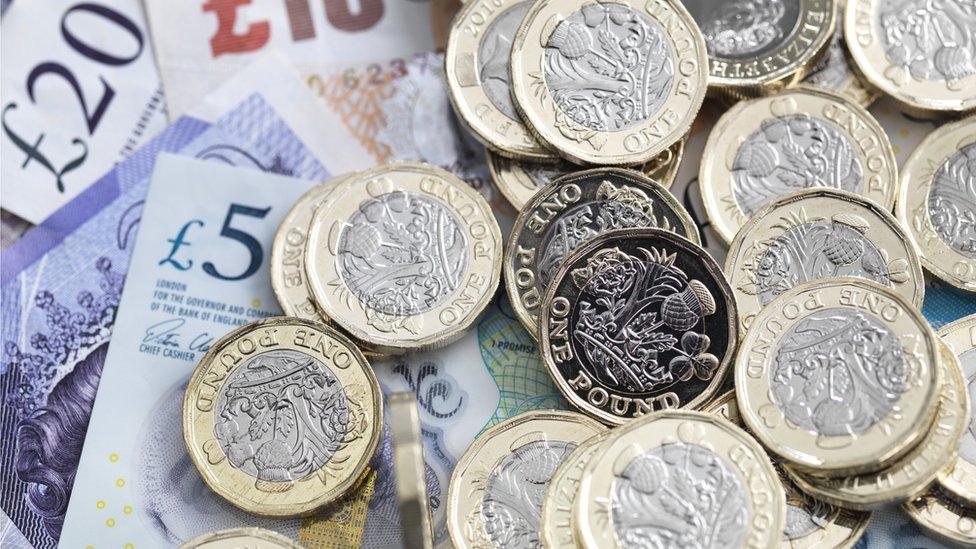Northern Ireland economy growth faster than UK average, figures show
- Published

Northern Ireland's economy may have grown significantly faster than the UK average in the first quarter of the year, official figures suggest.
The NI Composite Economic Index (NICEI) expanded by 1.2% over the quarter and grew by 1.7% on an annual basis.
UK gross domestic product (GDP) grew by just 0.1% over the quarter and by 0.2% over the year.
The sets of figures are not produced on a fully comparable basis, particularly when assessing public sector output.
Public sector output in Northern Ireland is based on public sector employment, while UK GDP is a more sophisticated measure which picks up things like the impact of strikes.
Most of the growth in the NICEI reflected a strong performance by the services sector, which is the dominant part of the economy.
Of the 1.2 percentage points of quarterly growth, 1.1 came from services and 0.1 came from the public sector.
The production sector, which is mostly manufacturing, and construction was essentially flat.
'Signs of optimism'
On an annual basis, services were also the main driver of growth contributing 1.2 percentage points to growth of 1.7 percentage points.
The Northern Ireland Statistics and Research Agency (Nisra) said: "Although economic conditions remain challenging there are signs of greater optimism during 2023.
"These signs of improvement are shown in the NICEI where economic activity has now increased over the last two quarters (quarter four in 2022 and quarter one in 2023)."
The NICEI is now 6.3% above its pre-Covid pandemic level, while UK GDP is still marginally below its pre-pandemic level.
However on a longer-term view, the scarring effect of the banking and property crisis of the late 2000s is still visible on the Northern Ireland economy.
The NICEI is only 0.6% above the previous maximum recorded in quarter three of 2007.
By comparison, UK GDP in the first quarter of 2023 is estimated to be 14.6% higher than its pre-economic downturn peak in quarter one of 2008.
Related topics
- Published15 June 2023
- Published23 May 2023